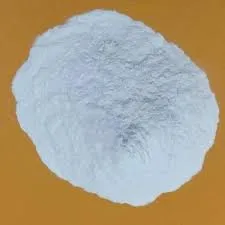
Oct . 05, 2024 16:11 Back to list
hec cellulose
The Versatility and Applications of HEC Cellulose
Hydroxyethyl cellulose (HEC) is a non-ionic, water-soluble polymer derived from cellulose, which has gained significant attention across various industries due to its unique properties. This versatile compound is formed by the etherification of cellulose with ethylene oxide, resulting in a product that combines the natural benefits of cellulose with enhanced functional attributes. HEC’s ability to modify rheological properties, such as viscosity and flow behavior, makes it an essential ingredient in an array of applications ranging from construction to cosmetics.
Properties of HEC Cellulose
One of the most remarkable characteristics of HEC is its high solubility in water, producing a clear and viscous solution. This property allows HEC to function as an effective thickening agent and stabilizer in many formulations. Additionally, HEC is chemically stable and has excellent resistance to heat, light, and microorganisms, which enhances its usability in diverse environments. Another notable feature is its non-toxic and hypoallergenic nature, making HEC a preferred option in applications that involve direct human contact, such as personal care products.
Industrial Applications
1. Construction Industry HEC is increasingly utilized in the construction sector, primarily in the formulation of cement-based products, adhesives, and tile grouts. Its ability to improve water retention and reduce viscosity is crucial for enhancing the workability and adhesion of these materials. Furthermore, HEC helps in preventing segregation and enhances the overall durability of construction products.
2. Cosmetics and Personal Care The personal care industry benefits significantly from the properties of HEC. It is commonly found in creams, lotions, shampoos, and conditioners due to its thickening and moisturizing properties. HEC not only helps to achieve the desired texture but also enhances the product's performance by improving stability and feel on the skin or hair.
hec cellulose

3. Pharmaceuticals In the pharmaceutical sector, HEC serves as a binder in tablet formulations, as well as a viscosity-increasing agent in liquid preparations. Its role as a film-forming agent is also utilized in controlled-release formulations, ensuring the gradual release of active ingredients over time.
4. Food Industry Although less common than other food additives, HEC is sometimes used in food processing as a thickener and stabilizer. It can enhance the texture and mouthfeel of food products while providing a barrier that can extend shelf life by minimizing moisture loss.
Environmental Considerations
In recent years, there has been a growing interest in sustainable and eco-friendly materials. HEC, being derived from cellulose, is biodegradable and poses a lower environmental risk compared to synthetic polymers. With increasing regulations on plastic usage and environmental sustainability, HEC positions itself as a viable alternative in various sectors, supporting the transition to greener technologies.
Conclusion
The multifaceted applications of hydroxyethyl cellulose underscore its significance in modern industries. Its unique properties enable innovations that cater to both functional performance and consumer preferences across diverse fields. As industries continue to evolve and seek sustainable materials, HEC stands out as a reliable and effective ingredient that can meet contemporary challenges while promoting environmental responsibility. Whether enhancing the texture of personal care products or improving construction materials, HEC cellulose remains a key player in the quest for innovative and sustainable solutions in various sectors.
-
Versatile Hpmc Uses in Different Industries
NewsJun.19,2025
-
Redispersible Powder's Role in Enhancing Durability of Construction Products
NewsJun.19,2025
-
Hydroxyethyl Cellulose Applications Driving Green Industrial Processes
NewsJun.19,2025
-
Exploring Different Redispersible Polymer Powder
NewsJun.19,2025
-
Choosing the Right Mortar Bonding Agent
NewsJun.19,2025
-
Applications and Significance of China Hpmc in Modern Industries
NewsJun.19,2025







